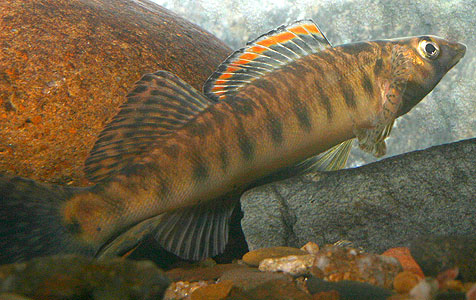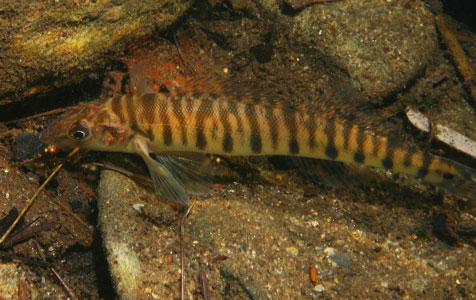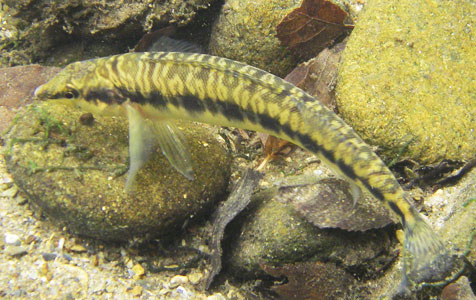Among my favorite native fish species, the various logperches rank highly. A closely related group of large darters, the four species found closest to my home share an elongated snout and use it to flip over small stones in order to feed on the invertebrates found underneath. Conservation Fisheries has worked with all four of these logperch species and has enjoyed limited success in propagating them.
I mentioned Percina jenkinsi, the Conasauga Logperch, in an earlier post. Today’s comments concern three additional species. Conservation Fisheries pioneered the idea of using “surrogate” species to develop captive propagation protocols. A relatively common and widespread species is selected for first attempts, so that the inevitable mistakes will not be made with another, much rarer species.
In this case, the Common Logperch, Percina caprodes, has served as a surrogate for two of its far less common relatives. In learning how to rear common logperch, the biologists utilized techniques they developed for the culture of other darter species. Most of the difficulties stem from the problems encountered in working with the tiny, planktonic larvae. Ultimately, over 1200 Common Logperch were produced.
An early beneficiary of the success with Common Logperch was the Blotchside Logperch, P. burtoni. Efforts to propagate this large darter began in 2004, with the collection of wild adults from Spring Creek, a tributary to the Hiwassee River. The intent was to restore populations to Little Tennessee River drainages. Eventually Conservation Fisheries succeeded in producing a few young. These are now on display at the Tennessee Aquarium in Chattanooga. Genetic analyses by Dr. Anna George of the Tennessee Aquarium Research Institute resulted in recommendations to utilize Little River as a source of parental stock for the effort. Little River fish were collected in 2007, but too late for any captive spawning. Hopefully, sufficient numbers will be produced for reintroductions this fall.
The large, impressively colored Roanoke Logperch, P. rex, is endangered. About a year ago, fourteen individuals were collected from the confluence of the North and South Fork Roanoke River near Roanoke, Virginia. They adapted quickly to captivity, swarming to the point where food was added to the tank whenever feeding was anticipated. With this species, too, it will be another season before Conservation Fisheries biologists are confident of their ability to rear them in large numbers.
The logperches are but a few of the many fascinating fish that inhabit the streams of the Southeast. With continuing work by Conservation Fisheries and its partners, such as the Tennessee Aquarium, we can save these jewels of the mountains for future generations.








